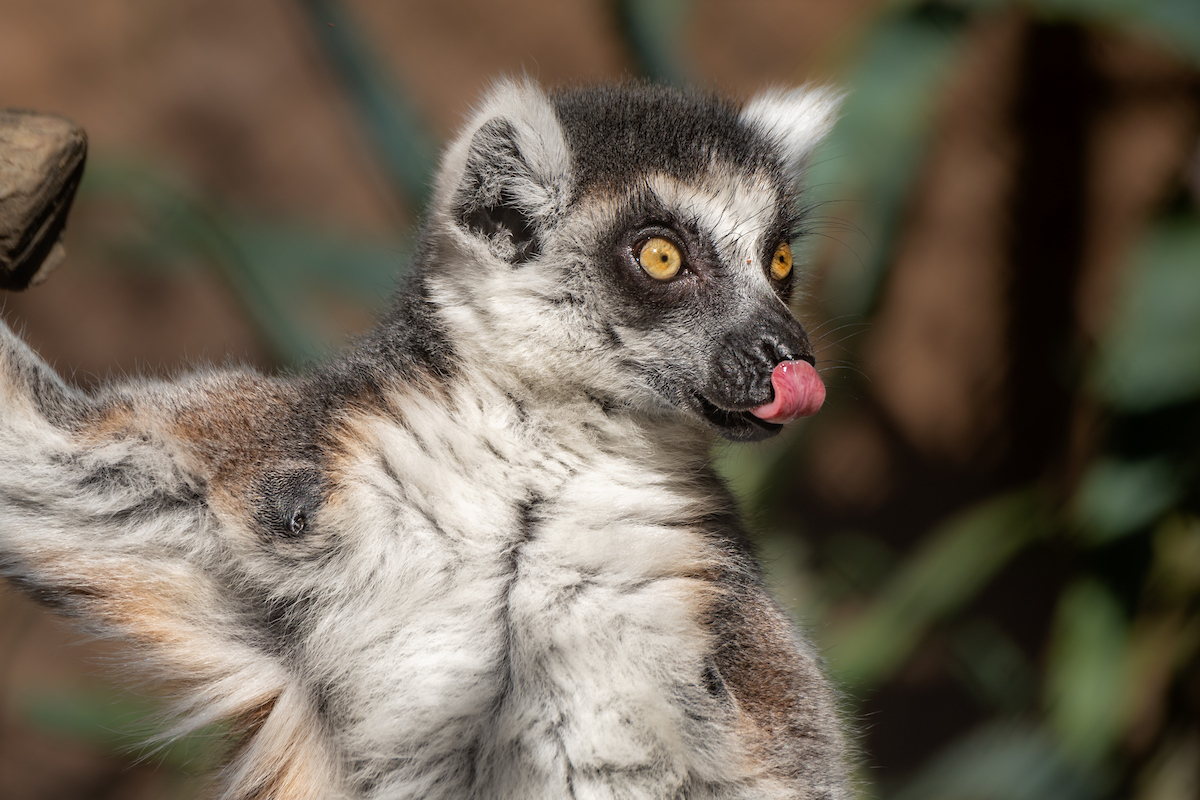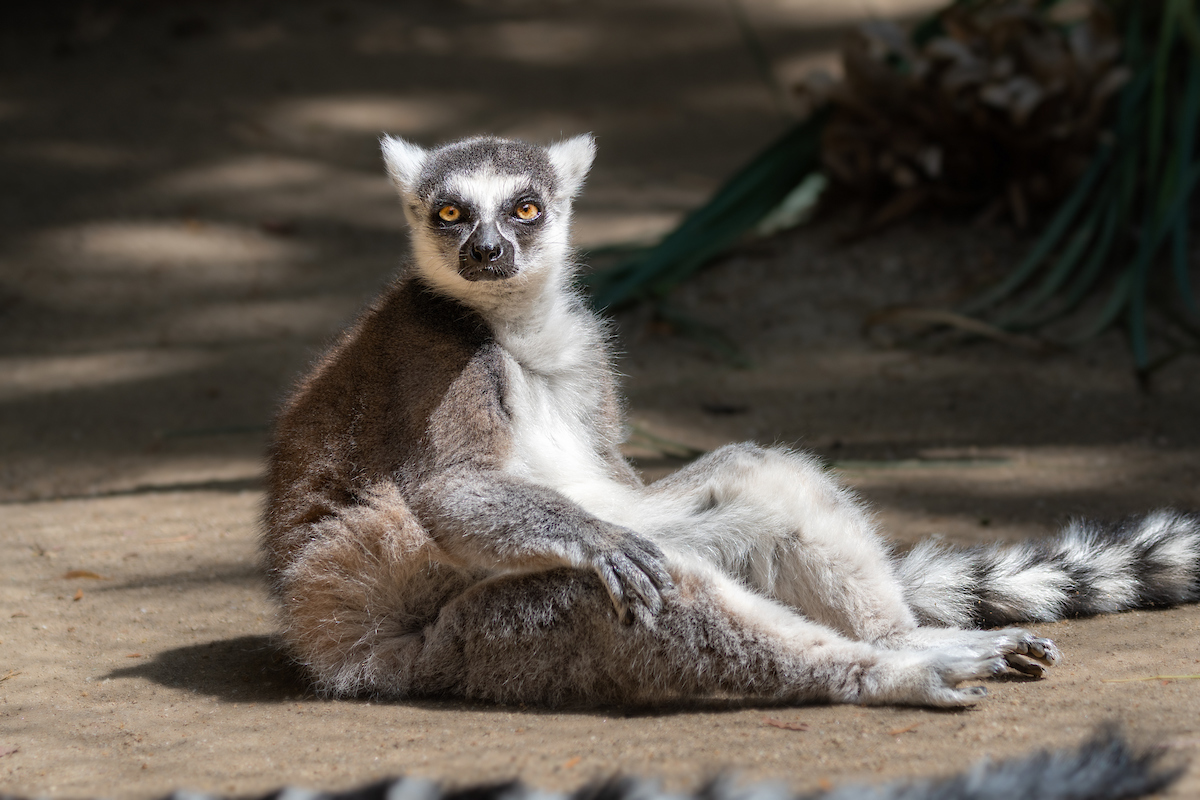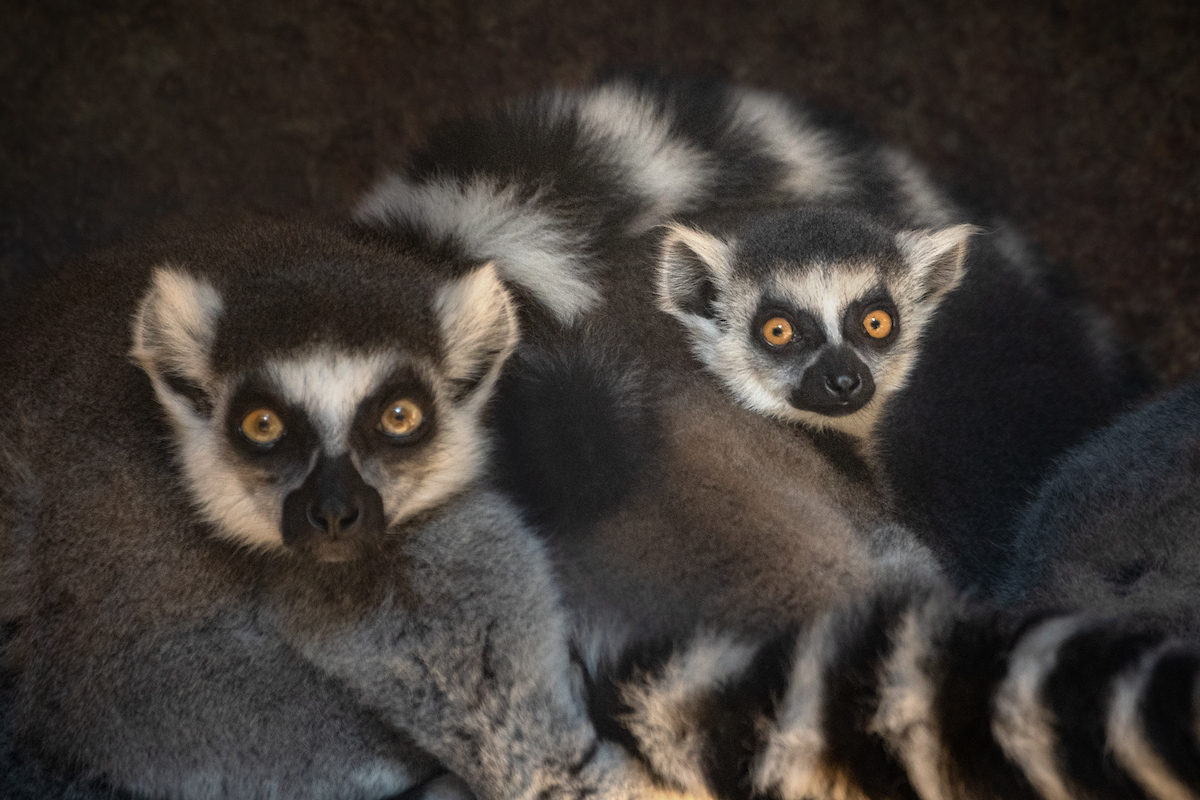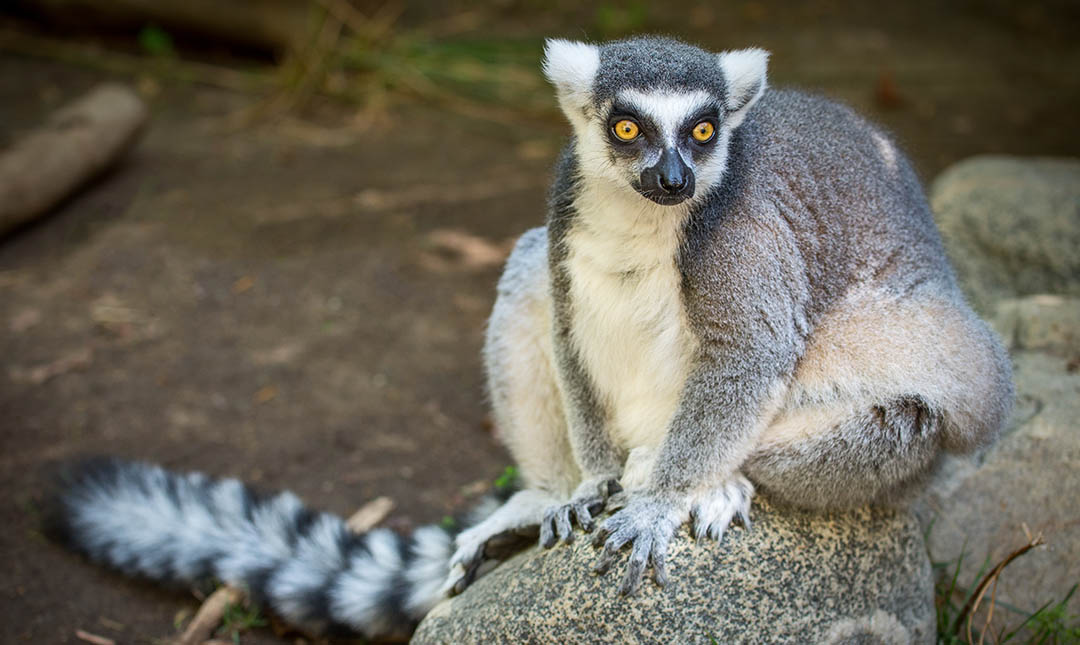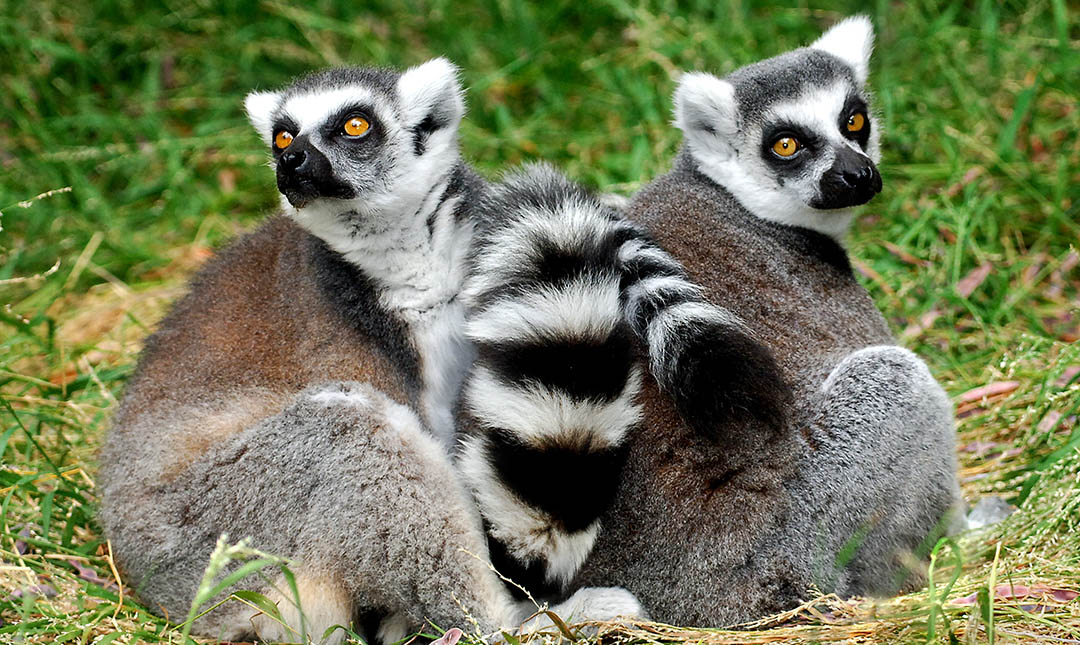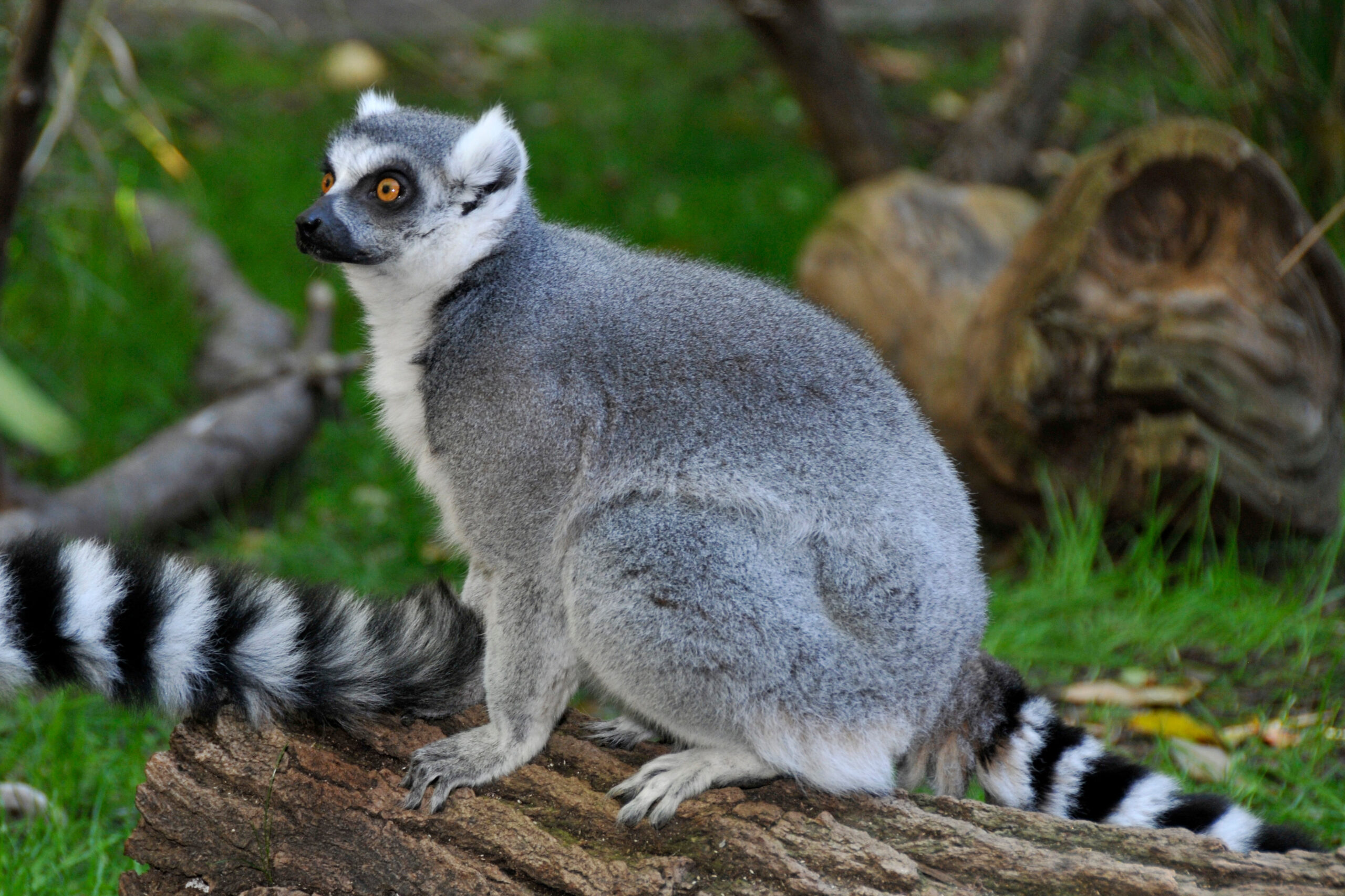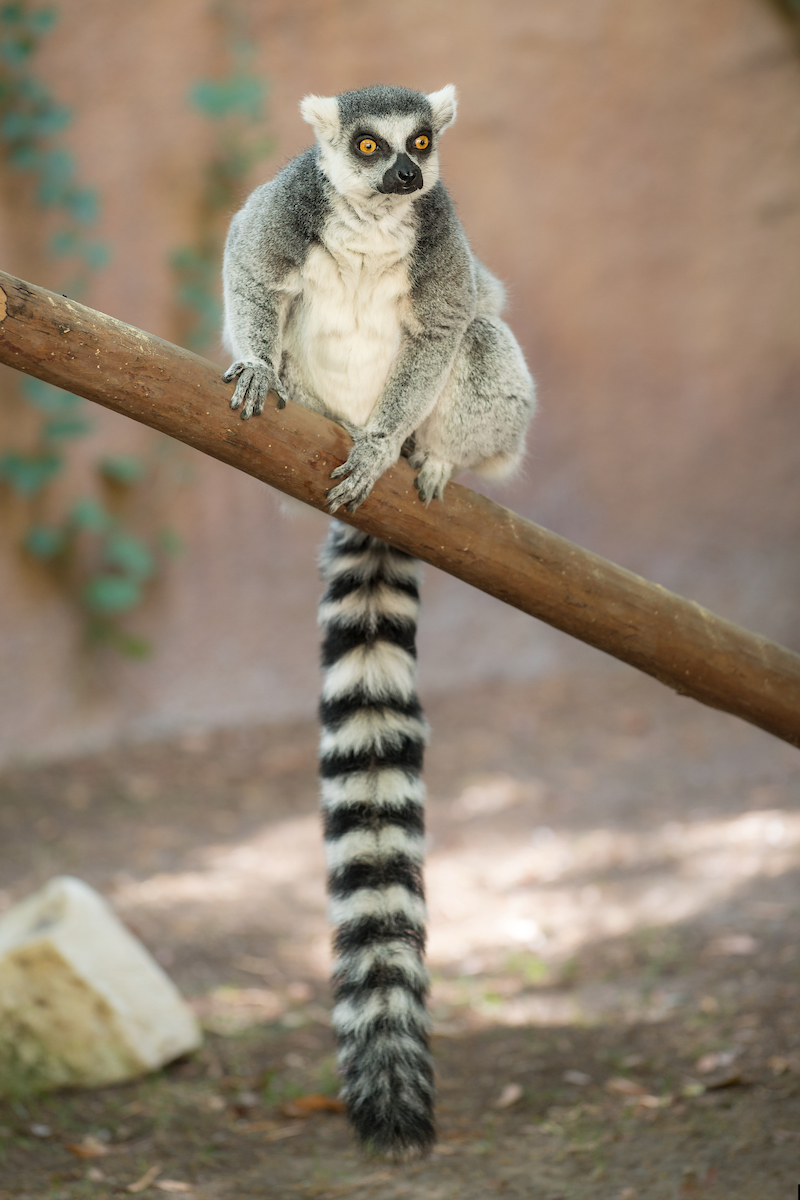About
Lemurs are found only on the island of Madagascar, which separated from mainland Africa about 160 million years ago. This isolation has reduced competition and limited predators, allowing more than 100 species of lemurs to thrive. It is thought lemurs arrived in Madagascar by floating over from Africa on rafts of vegetation 40–80 million years ago.
With their distinctive long, black-and-white banded tails, this is perhaps the most iconic lemur species. Highly gregarious, they live in troops and spend time together grooming, sunbathing, and foraging. These are the most terrestrial of the prosimian species, spending much of their time on the ground. Groups are led by a dominant female. Hierarchy is established through play when young. Females are fertile for only a few days a year, so males compete for mating rites through “stink fights.” They load their tails with a strong-smelling substance secreted by scent glands then shake them vigorously at rivals to ensure the odor disperses. It is accompanied by fierce stares and threatening calls.
Lemurs’ long tails are not prehensile and are used primarily for balance as the lemurs walk or leap among tree branches in search of food. While foraging, tails are held in the air as a “follow me” flag. Lemurs have a better sense of smell than other primates. Their moist noses enhance the aromas of ripe fruit or predators such as the fossa, a carnivore closely related to the mongoose. The population of ring-tailed lemurs is estimated to have decreased by more than 50 percent during the last 40 years. They are endangered due to habitat fragmentation and destruction due to logging and forest fires. Lemurs are also hunted for food and for the pet trade.




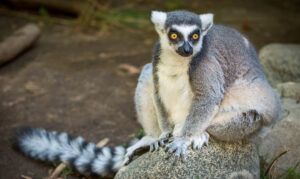

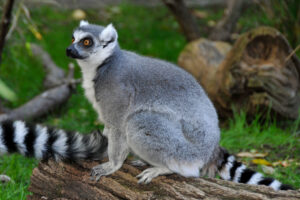

Habitat
Ring-tailed lemurs live in the dry forests and bush of southern Madagascar.
Diet
They are known to prefer fruits, but also eat leaves, seeds, flowers, and various other parts of plants such as the bark and sap of trees. They are important seed dispersers.
Physical Characteristics
Adult ring-tailed lemurs may reach a body length of about 15 inches. Their tails are longer than their bodies, adding another 22 to 24 inches in length. Ringtail lemurs weigh 5 to 8 pounds. Lifespan in the wild is estimated at 16 to 18 years. In human care, ring-tailed lemurs can live more than 30 years.


